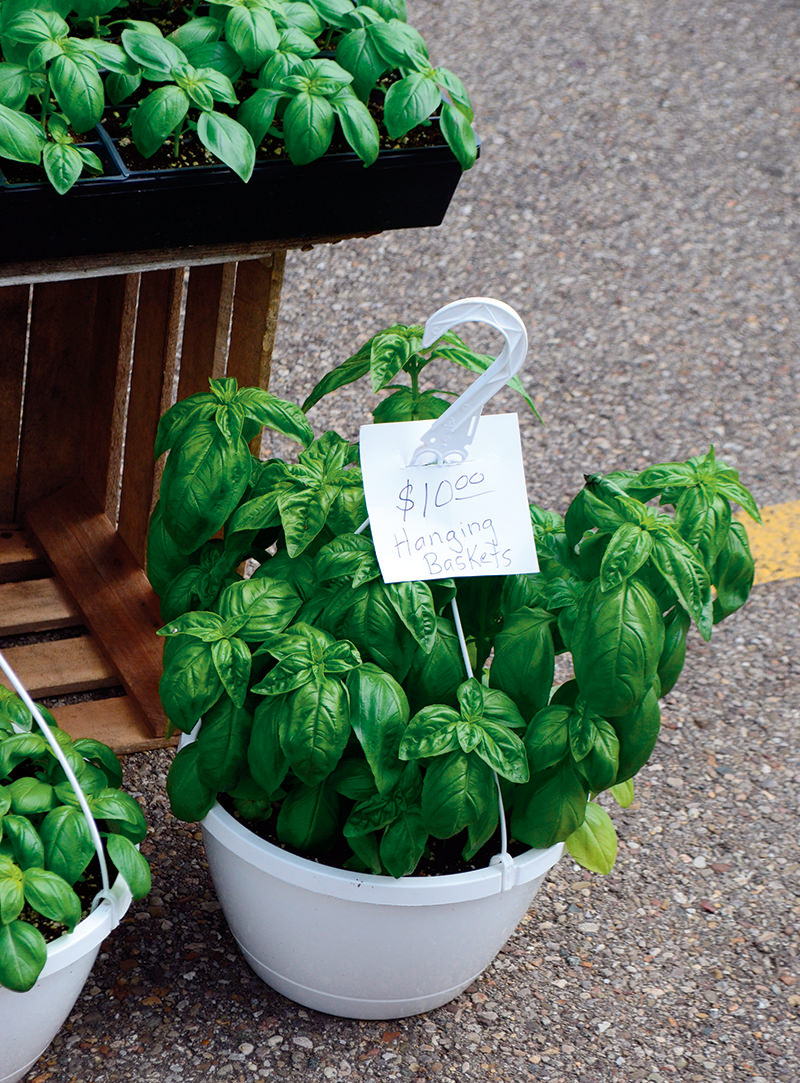
Seedlings are a great way to diversify your product offering, jazz up your display area and build a loyal customer base. How does that saying go? “Give a man a fish, and you’ll feed him for a day. Teach a man to fish, and you’ll feed him for life.” Well, the same motto applies to educating and empowering your market customers. Teaching local food patrons to grow their own food will help them understand where food comes from and develop a stronger appreciation for the produce you grow.
Don’t worry, your typical market-goer won’t load up on seedling starts and never return to the market again. Once they get a few of their own plants going, they’ll be even more enthusiastic about visiting the market, asking you questions and buying additional products.
Seedling Varieties To Sell
Market Favorites
Much like selling produce, your best-selling seedlings are going to be the basics: tomatoes, peppers, leafy greens and so on. Consumers prefer to grow what they know, and they all know that a homegrown tomato can’t be beat. If you focus your efforts on the big sellers, you’ll be able to upsell some more adventurous plant varieties. Eggplant, watermelon, artichoke, cucumber and kohlrabi might fall into this category.
Different species will need to be hardened off at different temperatures and will require various soil temperatures before planting. Be sure to research the seasonality of each plant to ensure optimum success, and relay that knowledge to your buyers.
Heirloom & Rare Varieties
Heirloom produce is rapidly growing in popularity and for good reason. Heirloom varieties are often more flavorful and colorful, albeit frequently lower yielding and more finicky in the garden. You can find heirloom seeds through companies like Seed Savers Exchange and Baker Creek Heirloom Seeds. Ideally, save your own seed or look for local seed from someone in the area. You might be able to locate an experienced gardener with a veritable seed library that he or she would be happy to share. Master Gardener associations are a great place to start if you’re looking for native varieties.
Herb Seedlings

Fresh herbs are a great way to gain interest in seedlings. Nothing is better than fresh herbs to cook with at home, particularly given how expensive fresh herbs can be at the store or market; plus, they’re easy to keep on the windowsill or even on the porch. Unlike most other plants, your customer won’t need an actual garden to grow a wide variety of herbs. Herbs make great gateway plants, so be sure to explain these boons to your potential customers. Once you get someone to grow fresh herbs, they’ll be more likely to come back and try other produce.
Basil, rosemary, thyme and oregano are musts, as they’re commonly used and easy to grow. You can also offer lavender, stevia and cilantro to herb growers looking to expand their culinary selection.
Ditch The Plastic
What’s the first thing that comes to mind when you think of starting seeds? For me, it’s rows and rows of black plastic trays. We always try to avoid the use of plastic unless it’s absolutely necessary, and more and more consumers are veering away from plastic, as well. Who knows what’s leaching into the soil that’s feeding the roots of your plants? A couple alternatives to plastic include:
- Soil blocks: These compact cubes of soil can be made at home with a simple tool. Your blocks will be free from any packaging and a great low-cost solution to starting seeds for sale. Block makers are generally $20 to $30, and that’s all you’ll need.
- Peat pots: They look cute and make it easy for your customers to transport. The peat pot can be planted directly into the soil and makes a great starting environment for seeds of all types; they can be found at specialty gardening stores.
Scrap The Seasonal Schedule

Seed starting doesn’t have to be seasonal. Most people associate starting seeds with springtime, but as farmers know, planting takes place year-round. In late summer and fall, you can sell starts for plants like kale, collards, winter squash, Brussels sprouts, cabbage and many more that are perfect cold-weather fare.
Teaching your customers about year-round gardening and planting techniques will need to be at the forefront. The use of cold frames and high/low tunnels are techniques many home gardeners would love to learn more about; print off fact sheets from your local extension that they can take with them.
Creative Displays For Your Seedlings
If you already have fresh produce available, interspersing seed starts with the same varieties of produce can be a neat way to show your customers how their food came to life. You could also make a tiered display for arranging starts without taking up valuable table space. Get creative to draw increasing interest.
Be A Garden Mentor
Growing plants might be new for your audience. For many customers, gardening is something their grandparents did. However, more folks are taking an interest in growing their own food. Uncertainties and mistrust of the industrialized food system are big factors. Educating people about where grocery-store food comes from can go a long way in making them want to grow their own food. Simple tips about planting locations, planting times, and water and sunlight needs are good to share when selling starts. Many of your buyers will be interested in growing their plants organically, so being familiar with organic pest control will be a plus.
The world needs more plants and people growing them; you can help spread the love! Not only do starts diversify your revenue stream, they also add flair to your display. What you don’t sell, you can use in your own garden or donate to a school or community garden.




